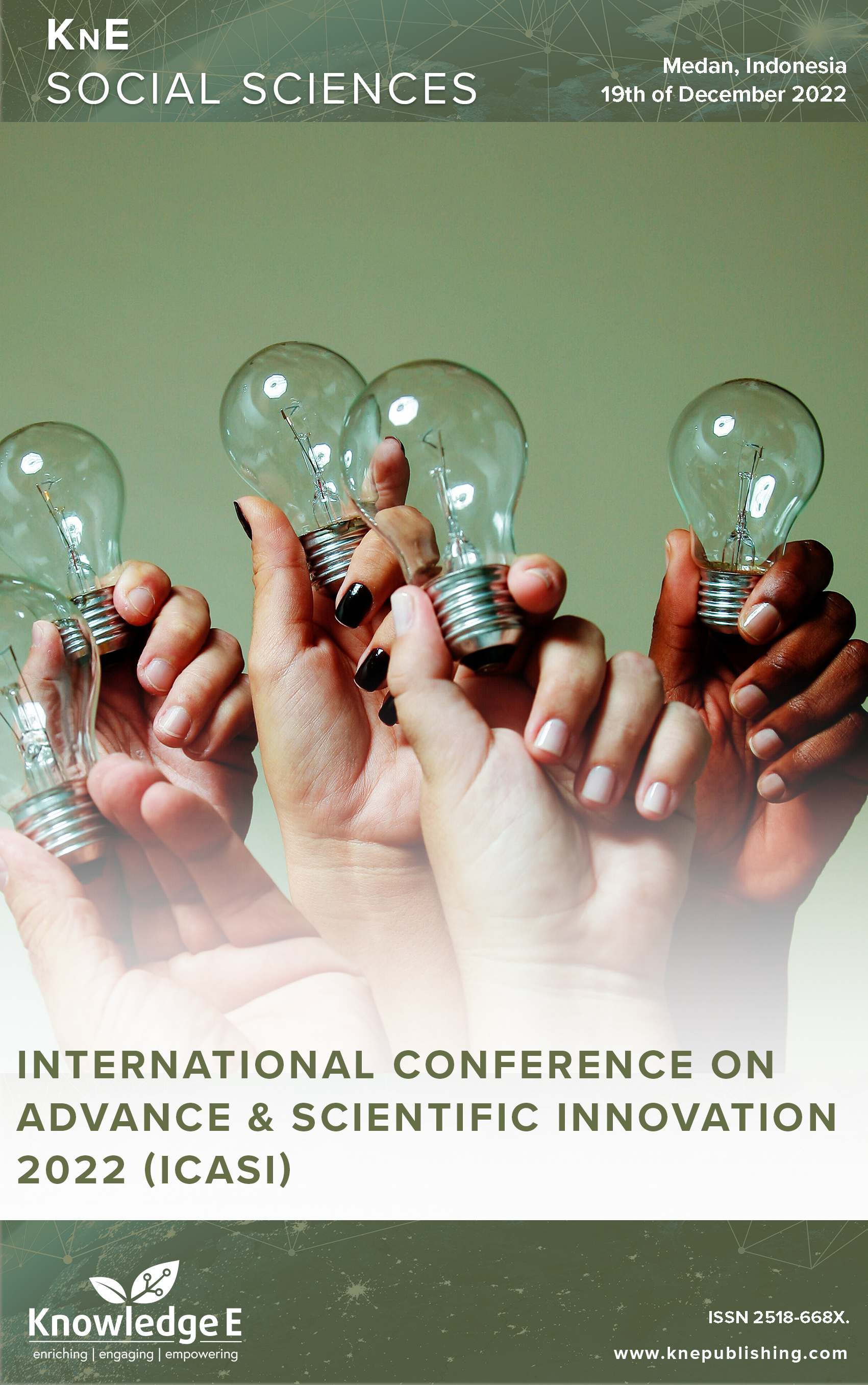The Problem of Food Security in the Indonesia Border Area of Nusa Tenggara Timur Province with Timor Leste Country
DOI:
https://doi.org/10.18502/kss.v8i9.13329Abstract
Areas in Nusa Tenggara Timur (NTT) have a high food vulnerability. This study aims to analyze food security in the NTT border region with Timor Leste, thus understanding how to strengthen community food security. The research method used is descriptive to provide a systematic, factual description of the facts, and characteristics of the phenomena investigated. The low performance of farming influences food vulnerability due to the nature of rainfall that does not support agriculture and the little ability of farmer governance and access to innovation and technology. Food security policy strengthens and is needed for border communities and outermost islands. The average distance from the town to the nearest permanent/semi-permanent market is too far. The local community’s strategy in dealing with a food vulnerability situation resulting from the hunger risk is to use food that has existed in the past, according to naturally occuring local wisdom. The problem of food security on the border of East Nusa Tenggara needs to be a top priority for Indonesia’s development on the border.
Keywords: food security, agriculture, border area, Nusa Tenggara Timur, Timor Leste
References
[2] Kennedy PS. The defense economics approach to synchronizing defense and economic development policies in Indonesia. Jurnal Pertahanan. 2019;5(2):10–25.
[3] Nazara S. Ringkasan Kebijakan Ketahanan Pangan dan Energi Nasional. Prosiding Sidang Pleno XIII dan Semnas ISEI, Mataram, 2018.
[4] Pérez-Escamilla R. Food security and the 2015-2030 sustainable development goals: From human to planetary health: Perspectives and opinions. Curr Dev Nutr. 2017 Jun;1(7):e000513.
[5] FAO. Food Security, Issue 2, June 2006. Food and Agriculture Organization of the United Nations; 2006.
[6] Kennedy PS. Water, energy and food security as a non military threat in Indonesia. Current research in economics Volume–2. Delhi: AkiNik Publications; 2019.
[7] Hariyadi P. Riset dan Teknologi Pendukung Peningkatan Kedaulatan Pangan. Jurnal Diplomasi. 2011;2:3.
[8] Peter TC. Food security, and economic growth: An Asian perspective. Asia Pac Econ Lit. 2005;19(1):1–17.
[9] Widjajanti I. Food and nutrition security in Indonesia: A strategic review. SMERUUKP4- WFP, 2015.
[10] Hutabarat PM. Globalisasi dan Ketahanan Pangan/Energi. Prosiding Sidang Pleno XIII dan Semnas ISEI, Mataram, 2018.
[11] FAO. The water-energy-food nexus. A new approach supporting food security and sustainable agriculture. Rome: Food and Agriculture Organization of the United Nations; 2014.
[12] UN. Water, food and energy nexus in Asia and the Pacific. Bangkok: United Nations, Environment, and Development Division ESCAP; 2013.
[13] RI-Law. The Indonesian Republic Law No.18/2012 on Food, 2012.
[14] Enirawan, Hadi, Juanda, and Rustiadi. Analisis Kinerja Ketahanan Pangan di Provinsi NTB. Sosiohumaniora. 2015;17(2):119–125.
[15] Rutten LF, Yaroch AL, Rutten SM, Yaroch. Food systems and food security: A conceptual model for identifying food system deficiencies. J Hunger Environ Nutr. 2011;6(3):239–246.
[16] Salim Z. Food security policies in Maritime Southeast Asia the case of Indonesia. Manitoba, Canada: International Institute for Sustainable Development; 2010.
[17] Budianta A. Pengembangan Wilayah Perbatasan sebagai Upaya Pemerataan Pembangunan Wilayah Indonesia. Jurnal SMARTek. 2010;8(1):72–82.
[18] European Commission. Socio-economic challenges are facing agriculture and rural areas, 2017.
[19] Bellfield H. Bagaimana Indonesia dapat mencapai ketahanan air, energy, dan pangan tanpa mengikis modal alamnya? Climate and Development Knowledge Network (www.cdkn.org) implemented by WCS Indonesia in partnership with the Global Canopy Program. Uploaded by A.S. Irwan on Mar 09, 2021.
[20] Rahman MW. Ketahanan Energi, Air, dan Pangan, Downloaded from http://pdamtirtabenteng.co.id/berita/ketahanan-energi-air-dan-pangan
[21] Lalel HJD. Mampukah Nusa Tenggara Timur Mandiri Pangan Sumber Karbohidrat? Pangan Indonesia Yang Diimpikan, Chapter-September 2016.
[22] Tjitroresmi E. Perekonomian daerah perbatasan: potensi ekonomi dan perdagangan lintas batas NTT–Timor Leste. Jurnal Ekonomi dan Pembangunan. LIPI. 2011;19(1):13– 24.
[23] Kameo DD. Social economic problems in agricultural development in East Nusa Tenggara and East Timor. Volume XLIV. Ekonomi Keuangan Indonesia; 1996. p. 1.
[24] BNPP. Peraturan Badan Nasional Pengelola Perbatasan No.1/2015 tentang Rencana Induk Pengelolaan Perbatasan Negara Tahun 2015-2019, 2015.
[25] Priyanto, Diwyanto. Pengembangan Pertanian Wilayah Perbatasan Nusa Tenggara Timur dan Republik Demokrasi Timor Leste. Pengembangan Inovasi Pertanian. 2014;7(4):207–220.
[26] Bappenas. PrADa Profil dan Analisis Daerah Provinsi Nusa Tenggara Timur. Jakarta: Kementerian Perencanaan Pembangunan Nasional/BAPPENAS Kedeputian Bidang Pengembangan Regional; 2017.
[27] Pemprov NT. Rencana Pembangunan Jangka Menengah Daerah Provinsi Nusa Tenggara Timur Tahun 2018-2023. Kupang: Provincial Government Nusa Tenggara Timur; 2018.
[28] BPS NTT. Badan Pusat Statistik Nusa Tenggara Timur, 2018. Downloaded from https://ntt.bps.go.id/
[29] SIPD NTT. NTT Province SIPD. Downloaded from https://sipd.go.id/run/

